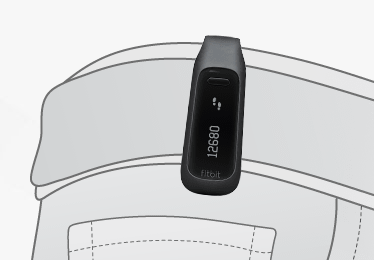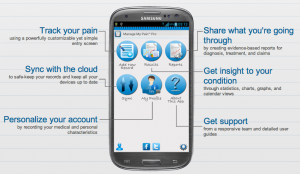Five questions to consider when using new technologies in your Physiotherapy clinic
Have you noticed the growth in new technology that fits in to health, wellbeing and medicine? Digital Health broadly encompasses mobile apps, self- tracking devices, gamification, social media and health information technology. For Physiotherapists, no matter what area of practice you fall in to, there are very helpful new ways that technology can help enhance our clinical practice, however it pays to be smart in assessing and using digital health products. Here are five quick questions to ask when considering what a digital health product can do for you and your clients.
1. Is it clinically relevant?
There are a lot of health gadgets and devices in the consumer market that can have some useful input in to Physical Therapy treatment. For activity trackers such as Fitbit or Nike’s Fuel Band, it’s great to know how many steps people take and how well they sleep, but if we’re suggesting clients embrace this new technology, how does it aid in our decision making? The onus is on us as clinicians to capture the clinical relevance within such devices, and determine how we can use the data collected in a meaningful way to change how we manage or advise that client.
2. How does it fit in to your existing systems?
Perhaps you’ve come across a video analysis tool such as Coaches Eye and you’d like to use that in your clinic? It’s a useful tool when used well but you must consider how it fits in to the established workflow systems and timeframes of your business? Would you risk a productivity loss and appointments running over to use a new tool such as this? While it’s acceptable to have some ‘teething problems’ in integrating new methods of movement analysis and test/ retest outcomes in to your practice, you’d better make sure you understand what you’re hoping to gain from it and you’re getting a clinical return on the investment of time.
3. Is the data safe, private and accessible to the client?
Maintaining privacy of any identifiable data that you collect or store in an electronic health record system or an app is crucial to safely using new technologies. Specific data protection standards in software design are enforced to varying degrees by government agencies across different countries and can result in hefty fines for breaches. On a higher level our biggest risk as clinicians is the trust that clients place in us to keep their personal health history private. Practically we need to assess the medico-legal risks that exist within our practice management software, privacy within our computer networks and the use of clinicians own smartphones or tablets to record images and videos that can expose you to liability.
4. Is it easy to use?
Ease of use and a good ‘user experience’ are fundamentals of technology design and well-made apps and websites continually seek to refine and improve this aspect of their product. If your clients or fellow clinicians are unable to navigate an app or a website easily or it’s not significantly better than what’s currently being used (stick figure drawings spring to mind!) then it is not adding value to effective clinical care. Ineffective use of technology is a risk to the hard-won rapport and trust we develop with our clients and is another warning to know how to bring effective technology in to your clinical systems.
5. Is it truly innovative?
In the bright and shiny world of technology businesses, there is the constant search for the next idea that can ‘disrupt’ and revolutionise how we manage health. Just as Paypal enabled e-commerce, there are emerging business systems looking to similarly shake up how health care is managed, services are accessed and clients are engaged in their health. While there can be great benefits to using a digital product such as a pain diary app or the revolutionary Alivecor, in some instances the best innovation is as simple as a pen attached to a clipboard.
Problem solving and creating systems in health care that work for everyone- clients, clinicians and the health care system- requires more than seeking to make what we use on paper or in person in to a digital product. If we can think digitally about the problem and partner with the people that can solve the many clinical challenges that confront us in all areas of practice, then we can create tools that are truly innovative in health care. Digital health is an exciting area to watch and to consider how we can use new technology to have greater impact in Physiotherapy in pain management, rehabilitation and physical health. It can aid in collaboration between professions, with carers and assist in preventing health disparities in rural and regional areas. As it grows and expands, it is up to us as clinicians to keep informed, look for the evidence and the relevance to clinical outcomes and for those with an entrepreneur bent, get involved in developing new ideas. How are you using digital health in your clinical practice? Add your comments below and lets share how we’re going to grow our profession using digital health
Want to know more? Follow @physioliss on Twitter

